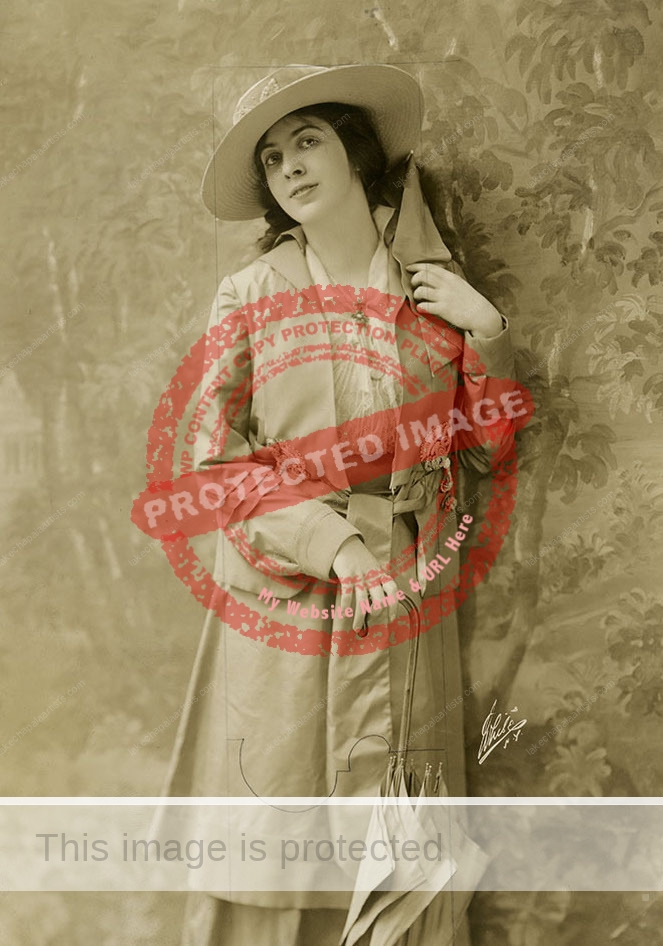The charismatic writer and artist Mort Carl, no doubt wearing his accustomed bandana tied in front of his neck, first arrived in Ajijic in the mid-1940s. Not long afterwards he married Helen Kirtland Goodridge; together they established the first weaving business in Ajijic, an enterprise that became known as Telares Ajijic.
Mortimer R. Carl was born into a Jewish family in Cleveland, Ohio, on 26 June 1905. His father, Benjamin Edward Carl (1877-1930), had been born in Ohio and (in 1910) owned or managed a brass company. Mort Carl’s mother, Minnie Rosenblum (1884-1965) had been born in Austro-Hungary and taken by her family to the U.S. as an infant.
The family was presumably fairly well-off since Mort and his mother spent the summer of 1908 in the country. Mort’s brother Norman was born in about 1915.
At the time of the 1930 census, taken only weeks after his father died, Mort, working as an instructor in a gymnasium, was still living with his mother and brother. Two years later, Carl married Theresa (“Terry”) Roth in New York City.
Little is known about Mort’s early life as a writer and artist except that he spent time in Woodstock, New York. He started his creative career as an artist and then tried his hand at writing, before rededicating himself to painting and sculpture.
Even though Carl was a writer, I have identified only one single work by him: Natural Man, copyrighted in the “Dramatic Composition and Motion Pictures” category on 14 March 1941. Prior to visiting Mexico, his artwork had apparently been shown in several exhibits in the U.S., though the only one I have so far confirmed was the 26th Annual Show of Woodstock Art Gallery in August 1945, which included his painting entitled Ballerina.
When Carl first arrived in Ajijic in 1946, he initially stayed, like so many before him, at the small lakeside inn belonging to the Heuer siblings. This is also when he met Helen Kirtland for the first time. (The following year, Kirtland and her three young children moved to Ajijic from Mexico City, after the break-down of her relationship with the children’s father, Ezra Read Goodridge, a dealer in rare books.)
When Mort Carl returned to Woodstock in September 1947 for several months, the local newspaper reported that he had “been in Mexico for the past year, where he was working on a book.”
It is probably his next trip to Mexico that was recounted to me so vividly by Helen Kirtland’s daughter Katie Goodridge Ingram, then a young girl. Ingram recalls that Carl drove down to Ajijic in a “giant black Packard”, “stayed at the Heuers where he said the mattresses were filled with softballs,” and often invited her mother to dine at the Heuers. Ingram and her two siblings were also invited, but ate in a separate room for children; the food was simple, but she still remembers the healthy, hearty soups and the pastry desserts.

Carl Mort. Antiphon. c 1981 (installed Chester Public Library. NJ, 1983).
Carl had arrived in Ajijic with a “full-on passion to be the next great novelist, the next great discovery in painting, and passionate to play tennis [and] to teach boxing.” After marrying Helen Kirtland in about 1949, Carl set up his art studio in the family home (today the Mi México store) but continued to rent a “small two-room house with a patio and kitchen area” as a writing studio a couple of blocks away, at the intersection of Calle Constitución and Ramón Corona. From about 1950 to 1952, that building was the always-hopping Club Alacrán (Scorpion Club), run by adventurous Black American artist Ernest Alexander and his Canadian partner Dorothy (“Dolly”) Whelan.
Ingram, who ran an art gallery in Ajijic in the 1970s, saw a lot of Carl’s paintings and says that many of the canvases he completed in Mexico, “had broad, dense strokes that screamed for more real estate,” but that. later, after divorcing Helen Kirtland, remarrying and moving to New Jersey, “he did large murals for banks and other commercial entities and so began to flex into the right kind of space.” Carl also became known for sculptures and “so-called monumental art.”
Soon after their marriage, Kirtland and Carl saw an opportunity to start a weaving business. Kirtland (who had changed her name to Helen Carl) had studied fashion and worked as a dress designer in New York prior to moving to Mexico. She provided the creative genius behind the project. The Carls found some small dusty handlooms sitting in a forgotten corner of the Posada Ajijic and bought them from the inn’s owner, Josefina Ramirez. Helen Carl tracked down José Mercado, the man who had originally made and operated the looms, and persuaded him to move from Guadalajara to Ajijic, teach the art of weaving and make them some much larger looms, suitable for dresses, tablecloths and “yardage”.
The weaving business quickly became a success story, so much so that poor imitations of several of Helen’s original designs are still being made in Ajijic today!. The Carls paid a brief visit to Woodstock in 1952 so that Mort Carl, who was said to be considering returning to live in Woodstock at some point, could “make a survey on weaving in this village.”
By 1955, the looms in Ajijic were sufficiently well-known to be included as a side-trip from Guadalajara: “For handloomed fabrics you can drive to quaint little Ajijic (Ahheehic) on the edge of Lake Chapala, pick your own cloth from the looms of Helen and Mort Carl and then drive on to Jocotepec for the best selection of handwoven serapes in Western Mexico…” The quote comes from a travel article written by Bob Lamont (later the long-time editor of the Lloyd’s Mexico Economic Report and founding president of ARETUR, the Association of Tourism Writers and Editors) and his wife Margaret.
The weaving business quickly became a success story, so much so that poor imitations of several of Helen’s original designs are still being made in Ajijic today!

Carl Mort in 1955 (Credit: El Informador)
Coincidentally, 1955 was also the year when Mort Carl held an exhibition of his latest artwork in Guadalajara. The two-week exhibit of twenty modernist abstracts opened at the Instituto Cultural Mexicano-Norteamericano de Jalisco (Galeana 158, Guadalajara) on 20 October. The works had such uninspiring names as “Construcción en negro y blanco”, “Construcción vertical” and “Composición en color.” The artist was quoted as claiming that his paintings needed to be seen and felt, not understood. Carl had previously held a show of his paintings at Galeria San Angel (Dr. Galvez #23) in Mexico City, which opened on 17 March 1954.
Besides his writing and his art, Mort Carl was also an active sportsman, enjoying golf and tennis. In the late 1940s, he even built his own clay court (possibly the earliest such court at Lake Chapala) on a lot rented for the purpose behind the family home. The white lines for the court were made by Helen Kirtland out of bleached canvas and stapled (later nailed) in; they were “re-colored with whitewash every week.” The net was an old fishing net, complete with weights, bought from a local fisherman and adapted for its new purpose with the addition of a double-stitched canvas band, precisely in line with the sport’s official regulations “as per Encyclopaedia Brittanica.” Carl hosted regular tennis parties to which he invited friends from Guadalajara.
Unfortunately, life in Ajijic was not all a bed of roses for Mort and Helen Carl. For all his artistic sensitivity, Mort Carl was prone to violent outbursts, sometimes threatening even those he held nearest and dearest. The couple remained together until about 1960 when Mort left Ajijic and moved to Mexico City, where he set up a similar hand-loom weaving business.
After his attempts at reconciliation with Helen proved futile, Carl was undergoing treatment for elbow bursitis in a local hospital when he met a woman who had just given birth. Instantly smitten, he allegedly told her that if she sent her child to an orphanage for adoption, he would marry her and take her to the States: she did, he did and they did. Mort Carl and his new wife lived for some time in San Francisco before settling in Chester, New Jersey.
Paintings by Mort Carl were exhibited alongside woodblocks by Blance Small at the Lucien Labaudt Gallery in San Francisco from February to May 1973.
In New Jersey, Carl became a moderately successful artist, specializing in large metal sculptures. The example in the image, which comes from the Smithsonian Art Inventories Catalog, is entitled Antiphon. The 2-meter high sculpture was acquired and installed in 1983 by Chester Public Library in New Jersey.
Mort Carl died in New Jersey in November 1985 and left his body to Columbia University Medical Center.
Acknowledgment
My heartfelt thanks to Katie Goodridge Ingram for sharing her personal knowledge and memories of Mort Carl, and to Sally Brander, Local History Librarian at Chester Public Library, NJ, for pinpointing the date of installation of Antiphon.
Sources
- El Informador: 19 October 1955, 7; 20 October 1955; 22 October 1955.
- Katie Goodridge Ingram. 2011. “Helen Kirtland Goodridge”, chapter in Alexandra Bateman and Nancy Bollenbach (compilers). 2011. Ajijic: 500 years of adventurers. Mexico: Thomas Paine Chapter NSDAR, 91-100.
- The Jewish Independent: 29 April 1932, 2.
- Kingston Daily Freeman (Kingston, New York): 12 September 1947; 8 October 1952, p 15
- Bob Lamont and Margaret Lamont. 1955. “Guadalajara One Of Picturesque Places In New World”, Phoenix Arizona Republic, 3 April 1955, 65.
- Oakland Tribune, 25 Feb 1973, 128.
- Smithsonian Institution. Smithsonian Art Inventories Catalog.
Comments, corrections or additional material related to any of the writers and artists featured in our series of mini-bios are welcomed. Please use the comments feature at the bottom of individual posts, or email us.

